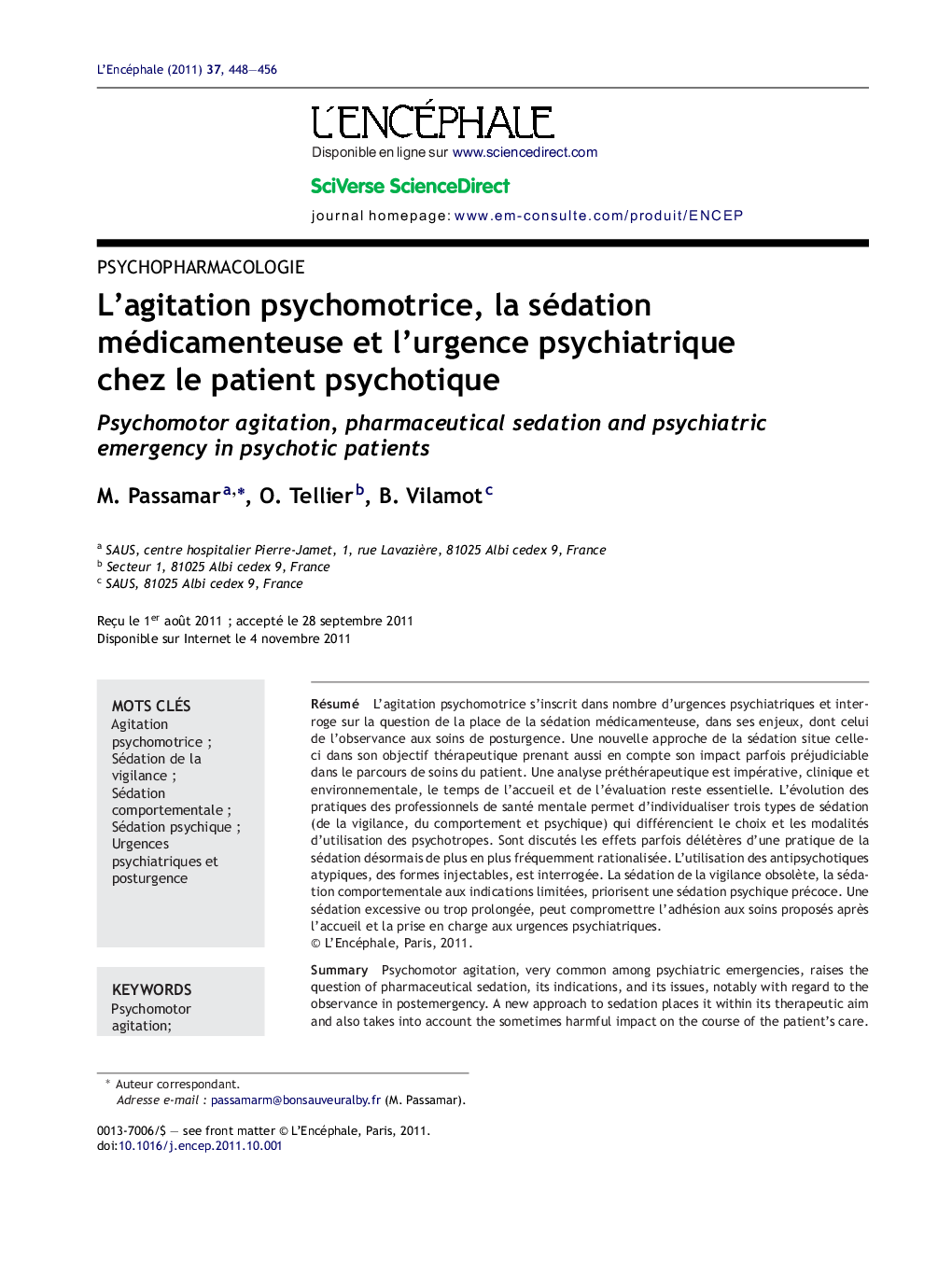| Article ID | Journal | Published Year | Pages | File Type |
|---|---|---|---|---|
| 4182475 | L'Encéphale | 2011 | 9 Pages |
Abstract
Psychomotor agitation, very common among psychiatric emergencies, raises the question of pharmaceutical sedation, its indications, and its issues, notably with regard to the observance in postemergency. A new approach to sedation places it within its therapeutic aim and also takes into account the sometimes harmful impact on the course of the patient's care. A pretherapeutical, analysis both clinical and environmental is crucial. The time spent on the initial meeting and assessment is essential. The evolution of professional practices in mental health allows us to distinguish three kinds of sedation (vigilance, behaviour and psychical) that guide the choice and the mode of psychotropic drug use. The harmful effects of an ever-increasing use of sedation is debated. The use of atypical antipsychotics and injectable forms is argued. Early psychical sedation is preferable to the obsolete practice of vigilance sedation and to behavioural sedation with its limited indications. The use of excessive or prolonged sedation might have a detrimental effect on the care offered after psychiatric emergency treatment.
Related Topics
Health Sciences
Medicine and Dentistry
Psychiatry and Mental Health
Authors
M. Passamar, O. Tellier, B. Vilamot,
